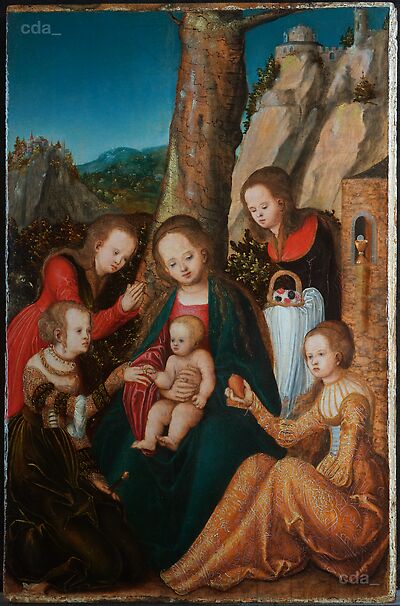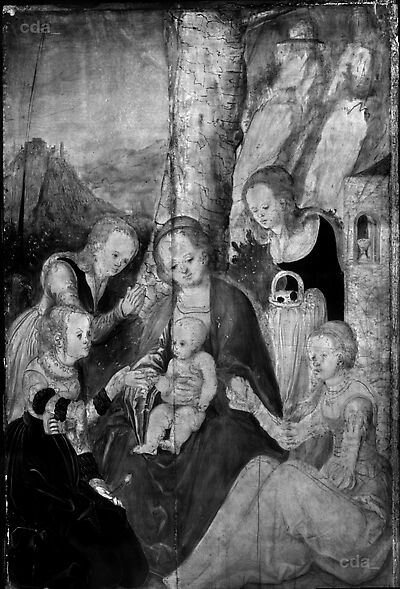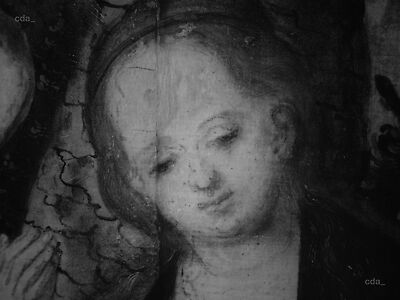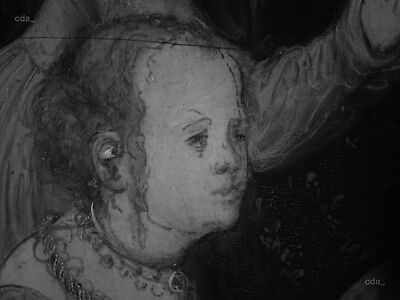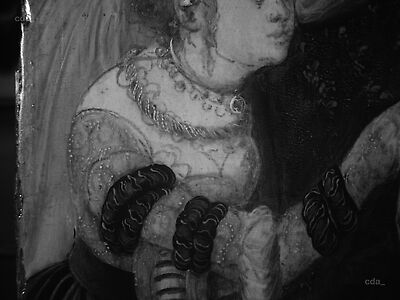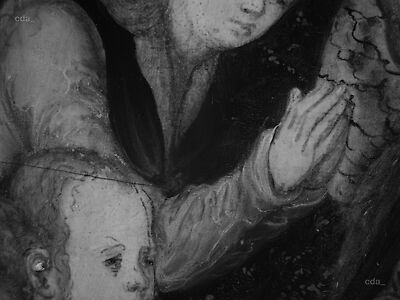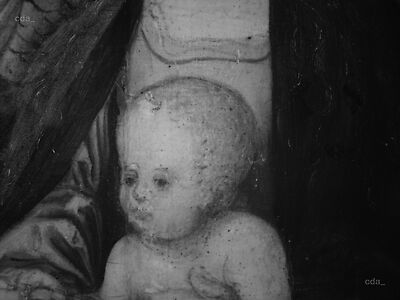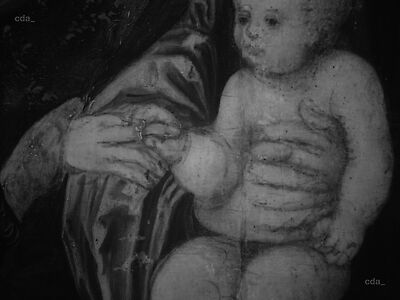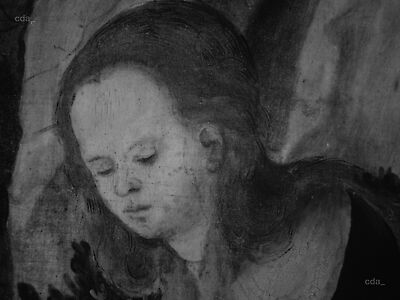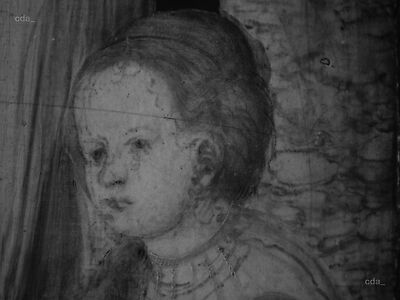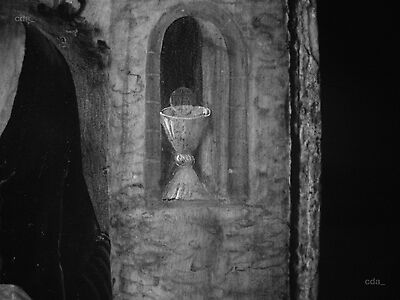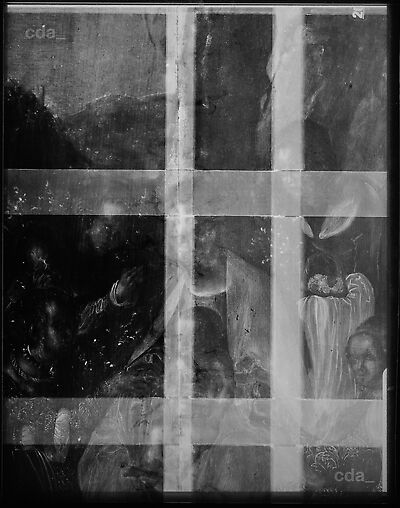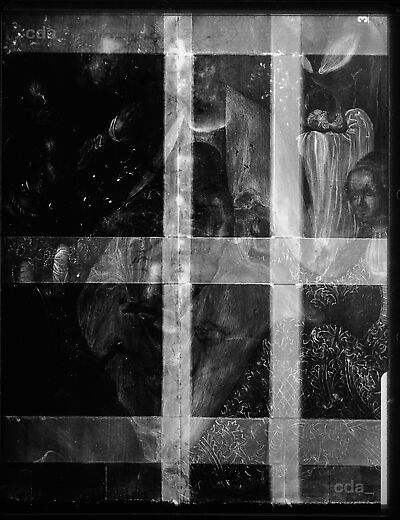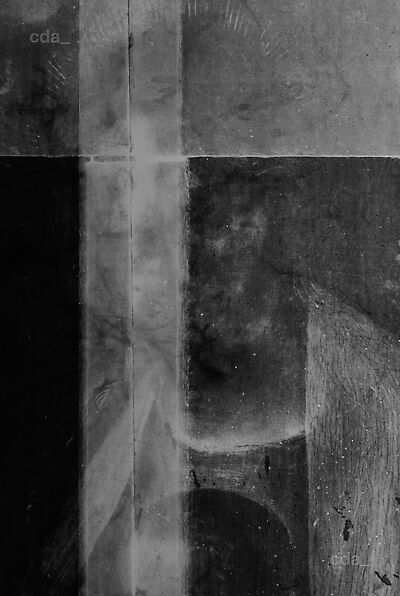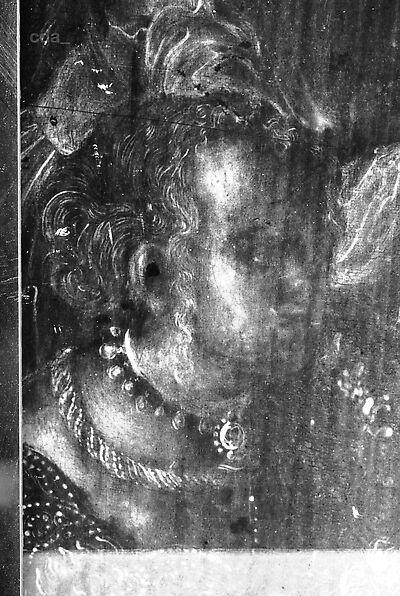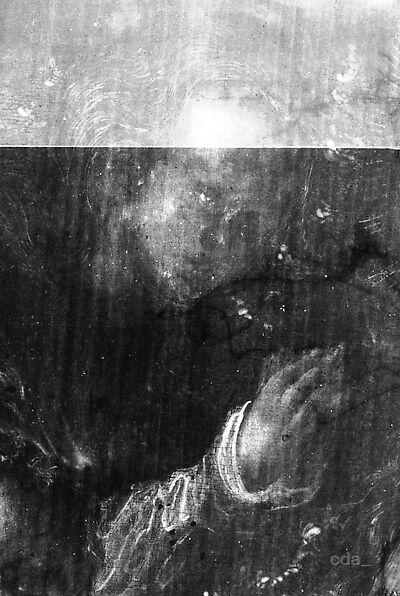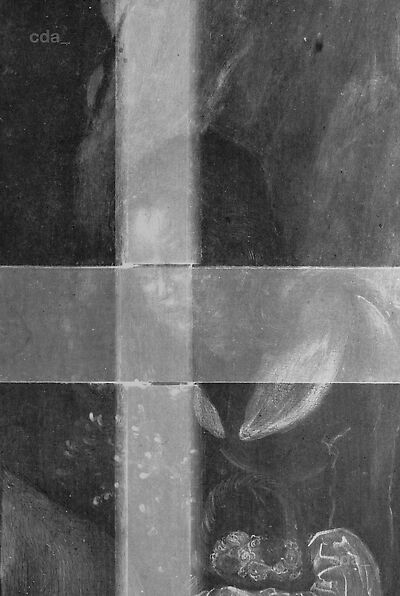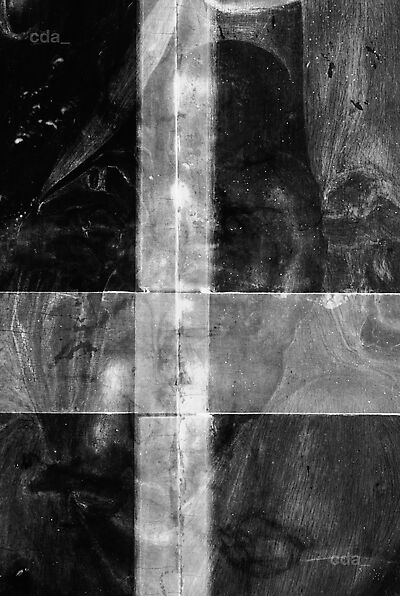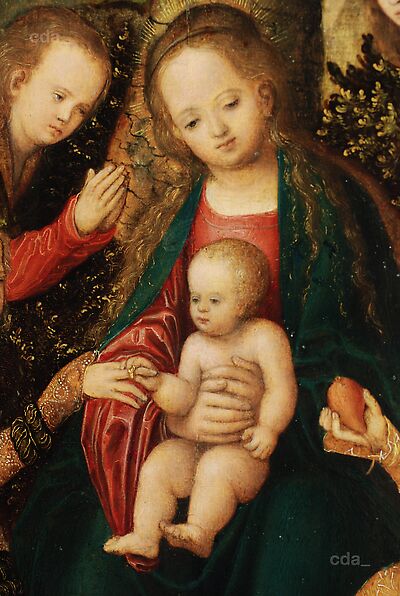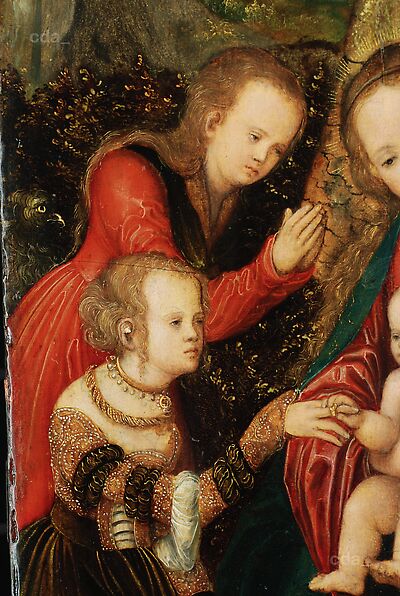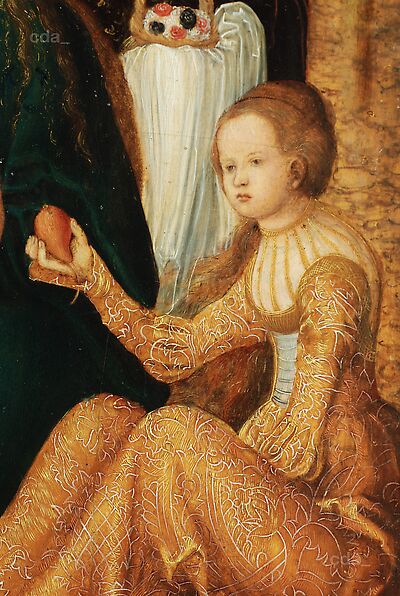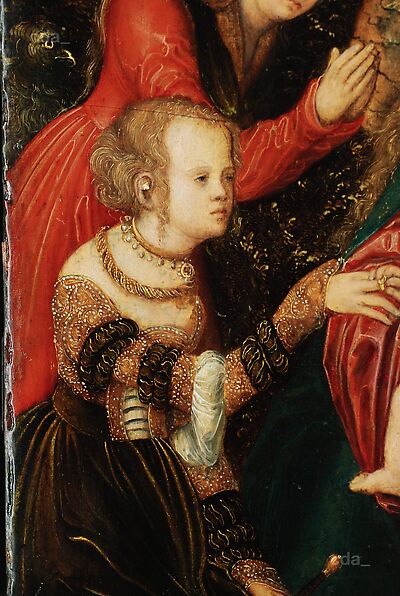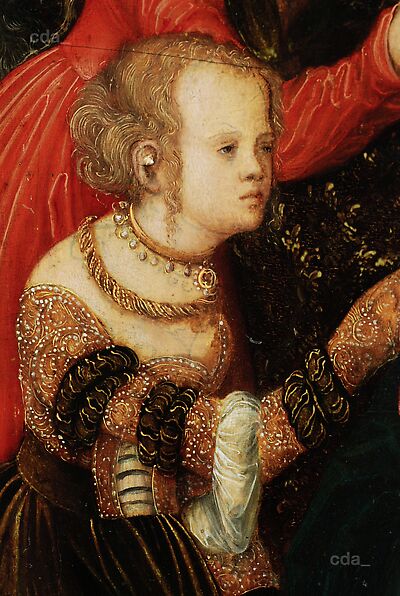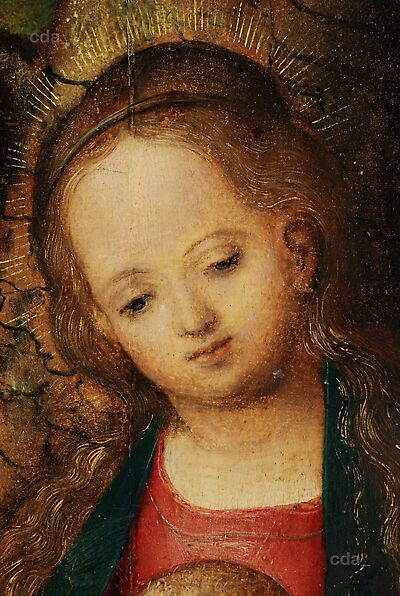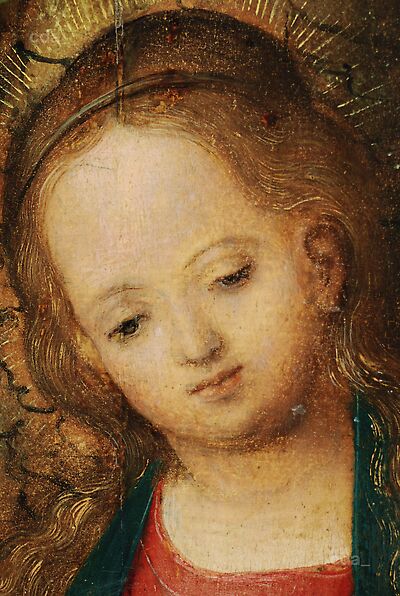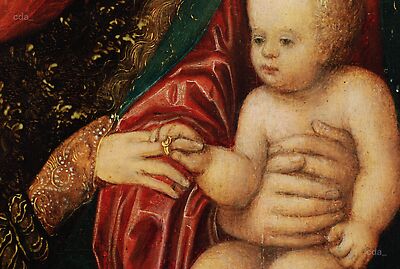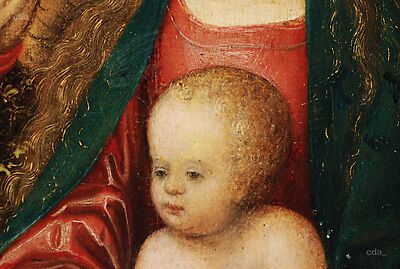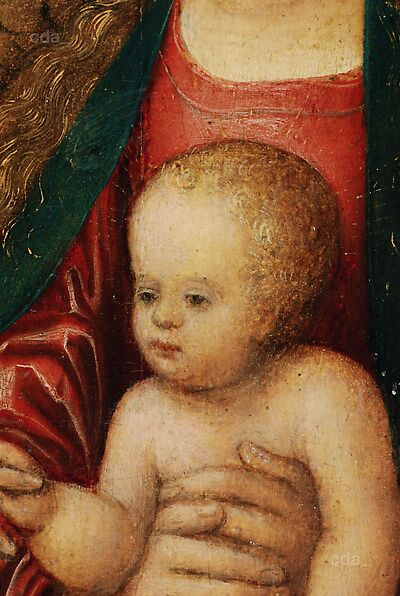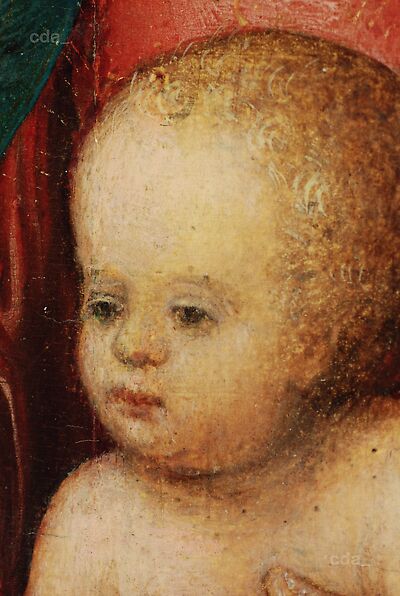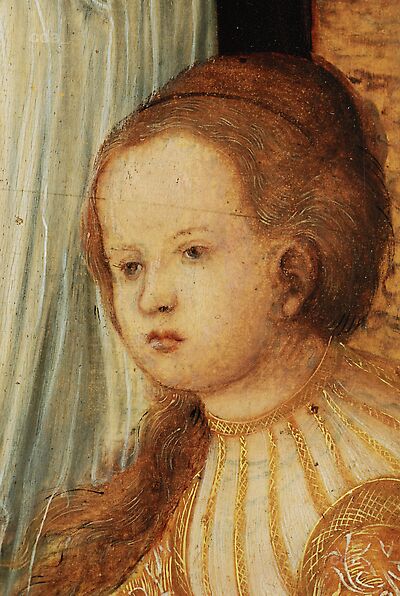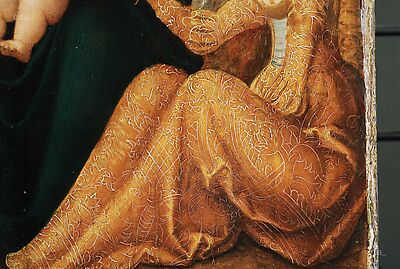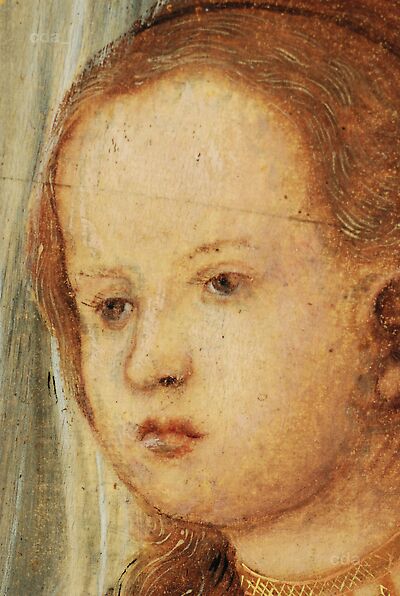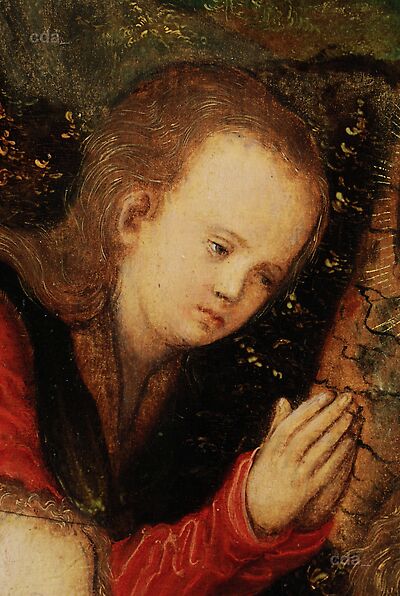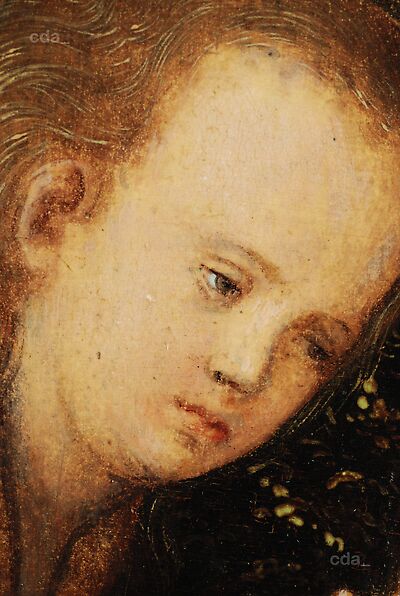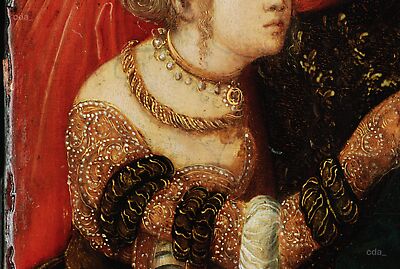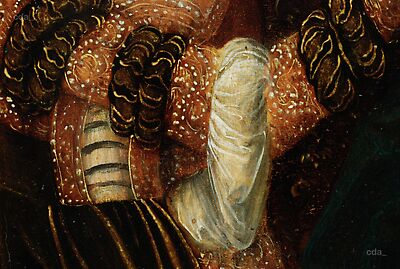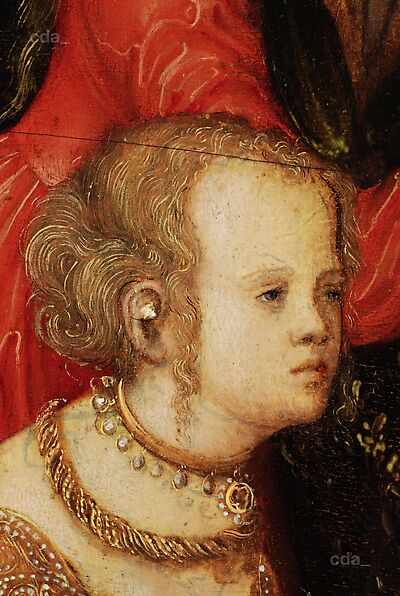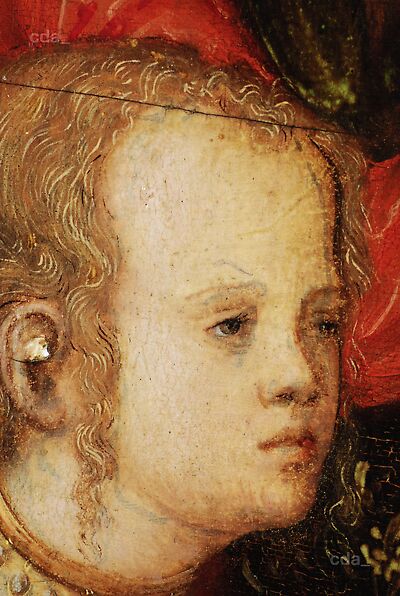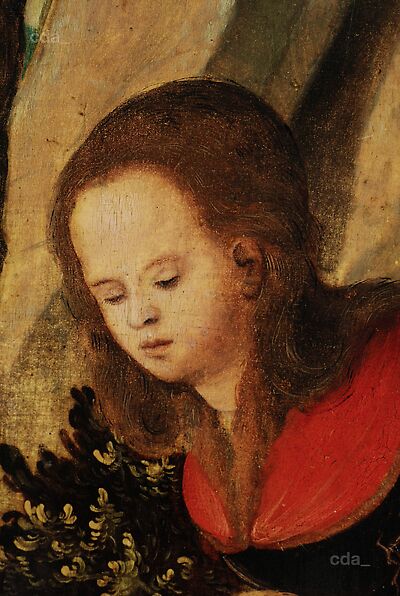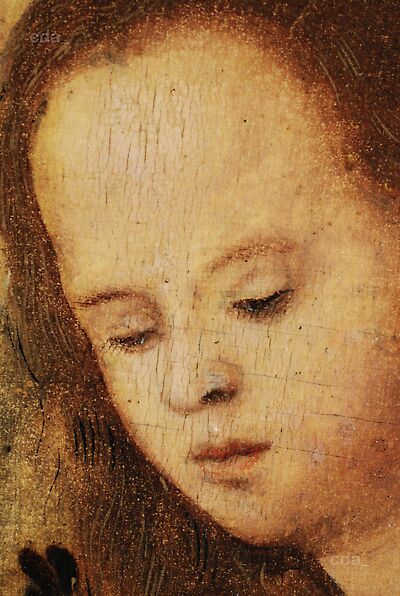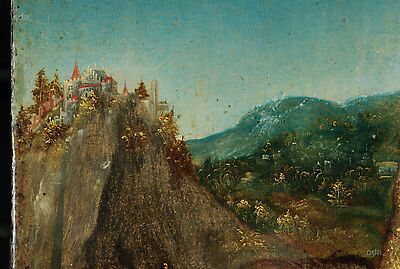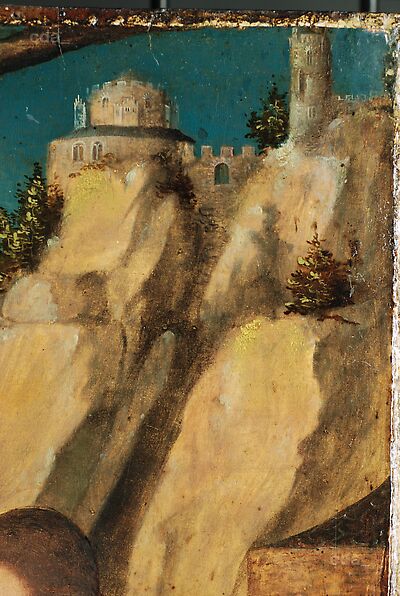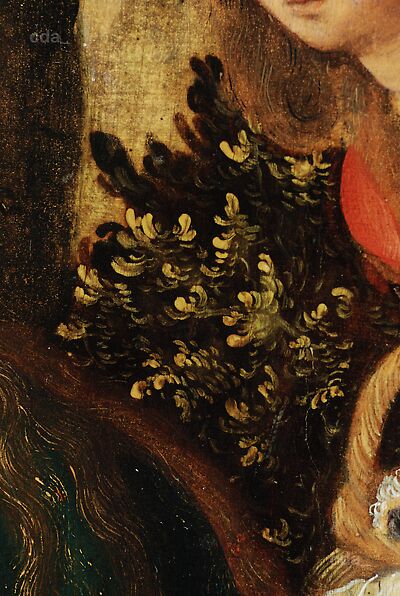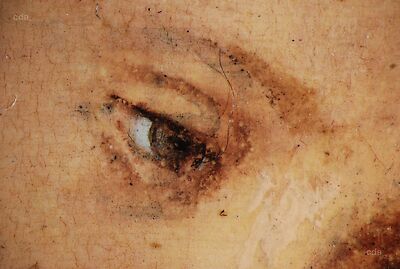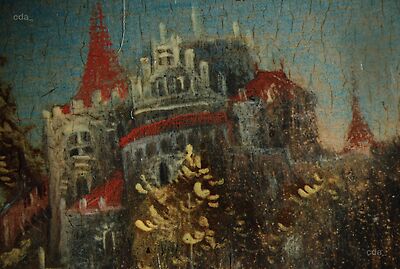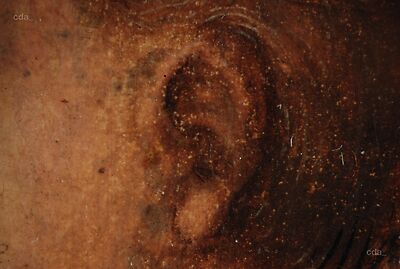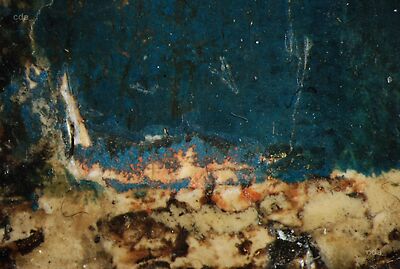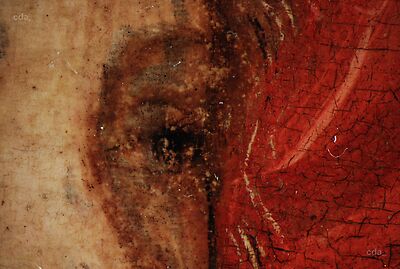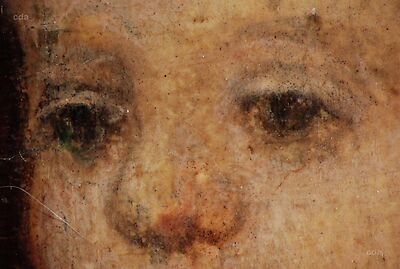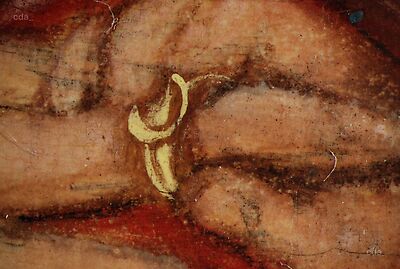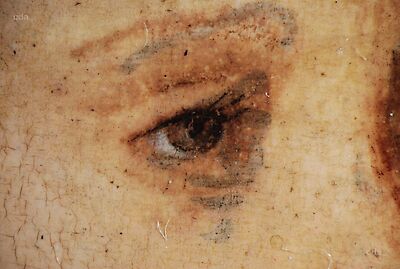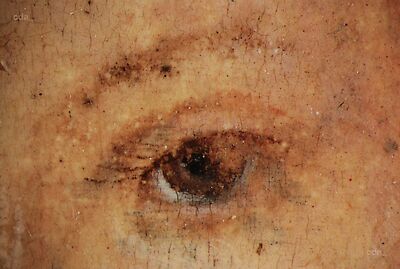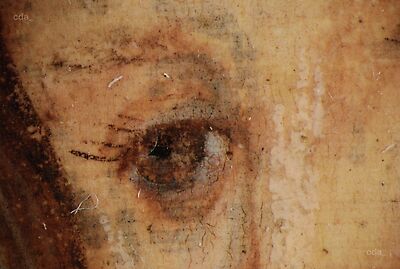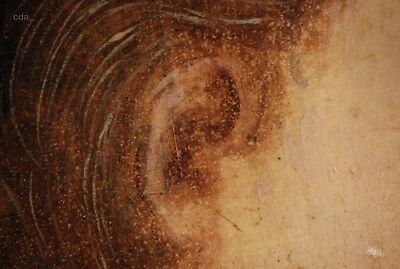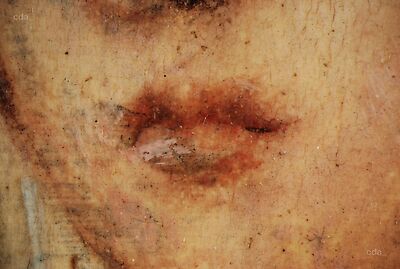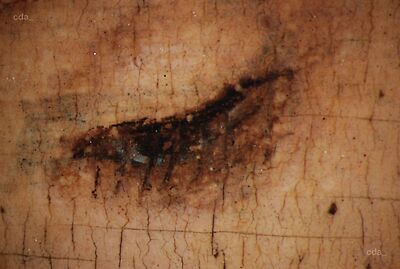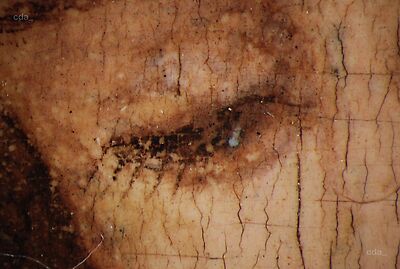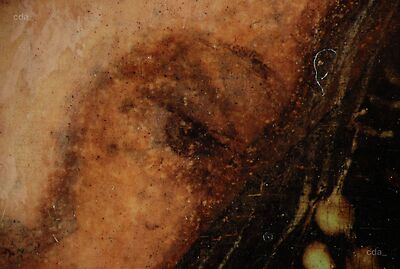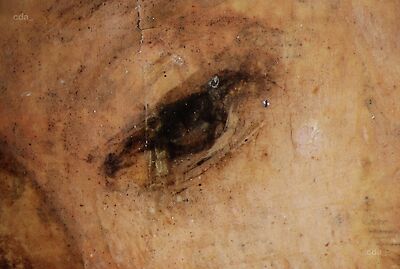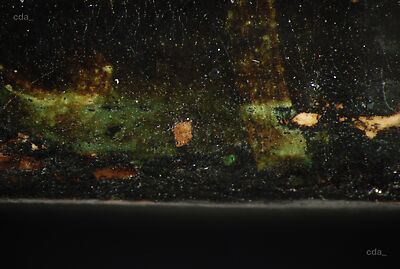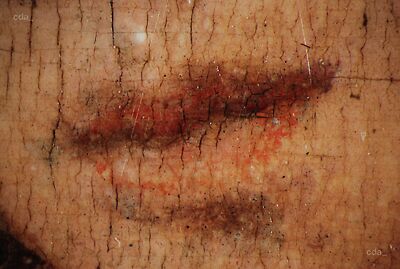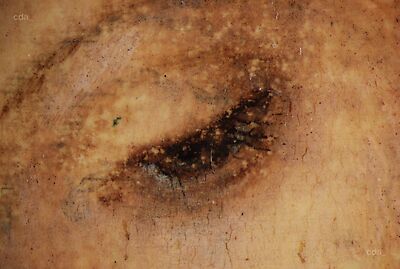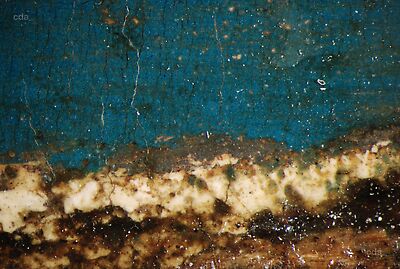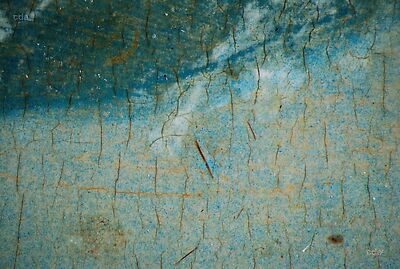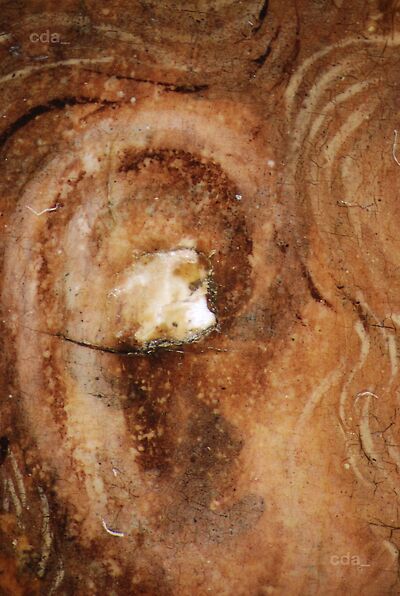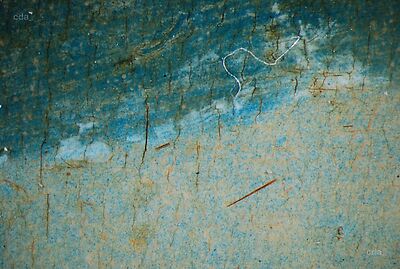Support
The wooden panel (40.6 x 26.7 x 0.5 cm) consists of two planks of different widths (top 11.2/15.5, bottom 11.7/15 cm). It is a softwood, probably lime. The x-radiograph shows fibres covering the join on the recto of the panel.
The panel was later thinned slightly on the reverse and cradled. The dimensions do not appear to have been altered. The proportions and the size of the support conform aproximately with the Standard format 'B' used by Cranach's workshop (B: c. 33.5-39 x 23.5-30 cm).
Ground and Imprimatura
The panel has a white ground application; it appears to be a chalk ground. On three sides the application does not extend to the edge, suggesting that the panel was fixed in a frame during this phase. On the left edge the ground extends to the edge. However here the ground and paint application extend over the edge of the panel and it is very probable that the panel was not fitted propery in the frame and not trimmed later. There is a barbe along the junction between the panel and the original frame. The raised form of the barbe indicates that the panel was probably smoothed in the frame.
There is a light red pigmented interlayer (Imprimatura) between the ground and the paint layers. Examination under the stereomicrscope revealed it may be an admixture of lead white and red lead.
Underdrawing
Infrared reflectography revealed an underdrawing executed in black ink on the ground (Examination Report, Sandner 2008). The drawing implement was probably a quill. The sketchy drawing of the figures generally employed short, curved lines to fix the contours and essential details. Faces, robes and jewellery were quite precisely defined; the background on the other hand remained a rough sketch. The tree trunk and the rock formation were only indicated with loose lines. Whether the prominant vertical lines at the left edge indicated a second tree is therefore difficult to ascertain. It may be presumed that a rough design, similar to Cranach's preparatory drawings on paper, was subsequently executed in a medium, which cannot be made visible (carbon or chalk). There are numerous small deviations from the underdrawing in the painted version. For example in the underdrawing St Barbara's robe has slits in the upper arm and is additionally decorated witha broad belt. These details as well as the necklace with a pendant were omitted in favour of a closed silk blouse. Furthermore St Barbara looks in a different direction: in the underdrawing she evidently looks at Christ, to whom she offers a piece of fruit, whereas in the painted version she looks away from the scene. A broad, decorative belt and an elaborate necklace are the attributes allocated to St Catherine in the other versions from the Cranach workshop. It is possible that the underdrawing of St Barbara in the present painting draws on the figure of St Catherine, like for example in the Budapest version, and that her costume was then adapted during the painting process. The underdrawing of St Dorothy's robes show broad folds in the area of the tower. At the same time these fold lines cross a second window drawn in the wall behind the head of St Barbara, which was not executed in paint. Accordingly the tower was evidently positioned between Sts Dorothy and Barbara in the underdrawing. This approach suggests that the creative process took place on the ground. It therefore seems improbable that the underdrawing refers to a detailed preparatory drawing or a well-developed prototype. Instead the evidence indicates, that the composition evolved on the ground.
[Heydenreich, examination report, 2008, 2]
Paint Layers and Gilding
Flesh Paint
The flesh paint was laid in with an admixture of lead white and vermilion pigments. Shadows were uniformly modulated with semi-transparent brown glazes and highlights were added in a lighter flesh tone. The x-radiograph records this rapid modulation of the faces. The absorption pattern appears comparatively patchy and shows little concentration on modelling and light relationships. On the other hand the black eyelashes were included with comparative confidence in minute scale. On some of the smaller panels by Lucas Cranach and his workshop there are heads very similar in appearance and execution, for example on 'St Anne with the Virgin and Child' (about 1520, FR105) and the 'Crucifixion' in Mahlis/Saxony.
Draperies
The initial undermodelling of the green velvet robe of St Catherine and St Dorothy's purple dress was executed in black. Over this the tubular folds were modulated in green or violet and subsequently the transitions were harmonized with coloured glazes. The Virgin's red sleeve appears to have been underpainted employing vermilion and black and highlights were applied in white. The folds of St Margaret's red dress were almost completely modulated in white over the red underpaint using a fine pointed brush.
The Virgin's blue cloak appears to have been executed in azurite in strokes rather than stippled. The x-radiograph shows that the blue paint was applied after the the first layer of flesh paint and that the neckline was partially covered. The gold brocade robe of St Barbara follows a common practice, whereby a linear brocade pattern was superimposed over the folds modulated in yellowish-brown paint without considering their arrangement. It is the subsequent application of yellow and reddish gold threads that emphasizes the modelling of the folds. Glassy inclusions in the yellow paint and the strong absorption of x-rays suggests the use of lead-tin-yellow.
Sky and Landscape
The sky and part of the landscape were underpainted in grey (white and black pigments). A gradual gradation of the tonal value is evident from the Zenith (grau) to the horizon (white). The blue pigment was then worked up with a stippling technique. It appears to be fine grained azurite. The mid- and background landscape were laid in and flatly modulated in different colours. The details were added employing various brushes, different paint consistencies and methods of application. For example to represent tree bark and moss light coloured paint was stipppled over the underpaint with a bristle brush. Subsequently black calligraphic lines were applied to emphasize the structure of the bark. Similarly the background landscape was modulated with a more or less opaque application and texture was added with a fine pointed brush.
[...] The x-radiograph shows that the painting process was planned and executed without large changes. The borders between single areas of colour was fixed with the application of the underpaint. There were no apparent alterations or corrections made during the painting process.
Framing
The original frame has not been retained
[Heydenreich, examination report, 2008]
- examined by Gunnar Heydenreich
